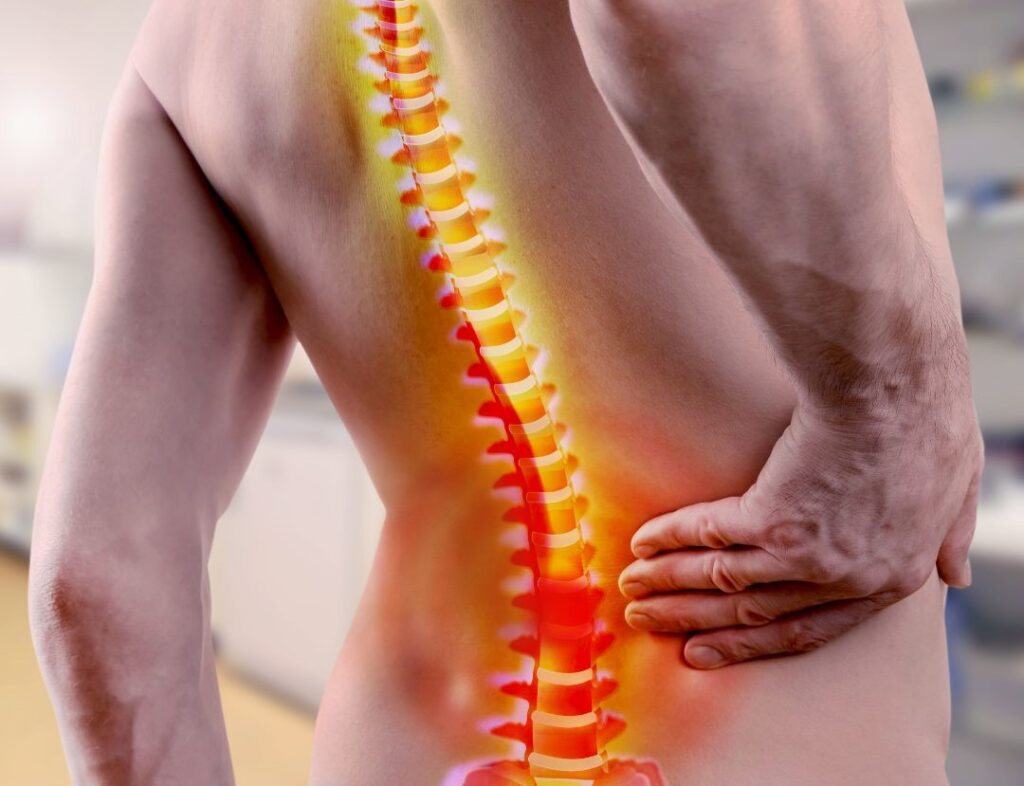
Understanding Lumbar Spine Nerve Impingement: Causes and Effective Management
Are you experiencing radiating pain, numbness, or weakness in your legs? Lumbar spine nerve impingement could be the culprit. Our team at Bayside Chiropractic is committed to helping you find relief and restore mobility. Call us today at (02) 9523 9940 to schedule an appointment. In the meantime, let’s understand what’s happening in your body.

Causes of Lumbar Spine Nerve Impingement
Lumbar spine nerve impingement, also known as lumbar radiculopathy, occurs when nerves exiting the lumbar spine become compressed or irritated. Essentially, it’s like a traffic jam on the highway of your spine that can cause pain, weakness, and numbness. Why? There are a few common culprits.
- Herniated Disc: When the gel-like material within a spinal disc protrudes it can press on nearby nerve roots.
- Spinal Stenosis: Narrowing of the spinal canal, often due to age-related changes or degenerative conditions. (It’s not hard to imagine traffic jams worsening if a tunnel gets narrower!)
- Degenerative Disc Disease: Wear and tear on spinal discs over time can lead to disc degeneration.
- Facet Joint Hypertrophy: Enlargement of facet joints in the spine, typically due to osteoarthritis, can encroach on nerve roots.
- Spondylolisthesis: Forward displacement of one vertebra relative to another disrupts traffic on the highway of your spine.
Management Strategies for Lumbar Spine Nerve Impingement
Effective management focuses on relieving pain, reducing inflammation, and improving spinal function. Treatment options include:
- Chiropractic Care: Skilled chiropractors use gentle spinal adjustments to realign vertebrae, alleviating pressure on affected nerves and promoting healing.
- Manual Therapy: Hands-on techniques like soft tissue massage, stretching, and mobilisation can release muscle tension around the spine, easing nerve pressure.
- Exercise Prescription: Tailored exercise programmes aim to strengthen core muscles, providing better support for the spine and reducing the likelihood of further impingements.
- Postural Correction: Guidance on ergonomic practices and maintaining proper posture helps reduce spinal stress and minimise the risk of recurrent impingement.
Understanding Symptom Distribution
Nerve impingement at different levels of the lumbar spine can lead to distinct patterns of symptoms radiating into the legs. For example:
Impingement at the L4-L5 level may cause pain, numbness, or weakness in the thigh and inner calf.
Impingement at the L5-S1 level may result in symptoms affecting the outer calf and sole of the foot.
Our chiropractors leverage their expertise to identify the root cause of your symptoms and devise a personalised treatment plan tailored to your needs.
Conclusion
Don’t let lumbar spine nerve impingement limit your lifestyle any longer. Contact Bayside Chiropractic today at (02) 9523 9940. We’re dedicated to helping you find relief from pain and regain mobility. Take the first step towards a pain-free future with us.
PS: Connect with us on Facebook for more health insights!
